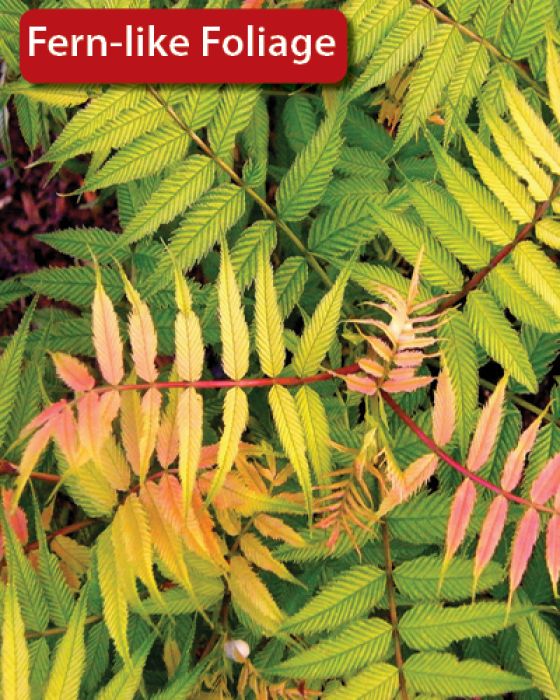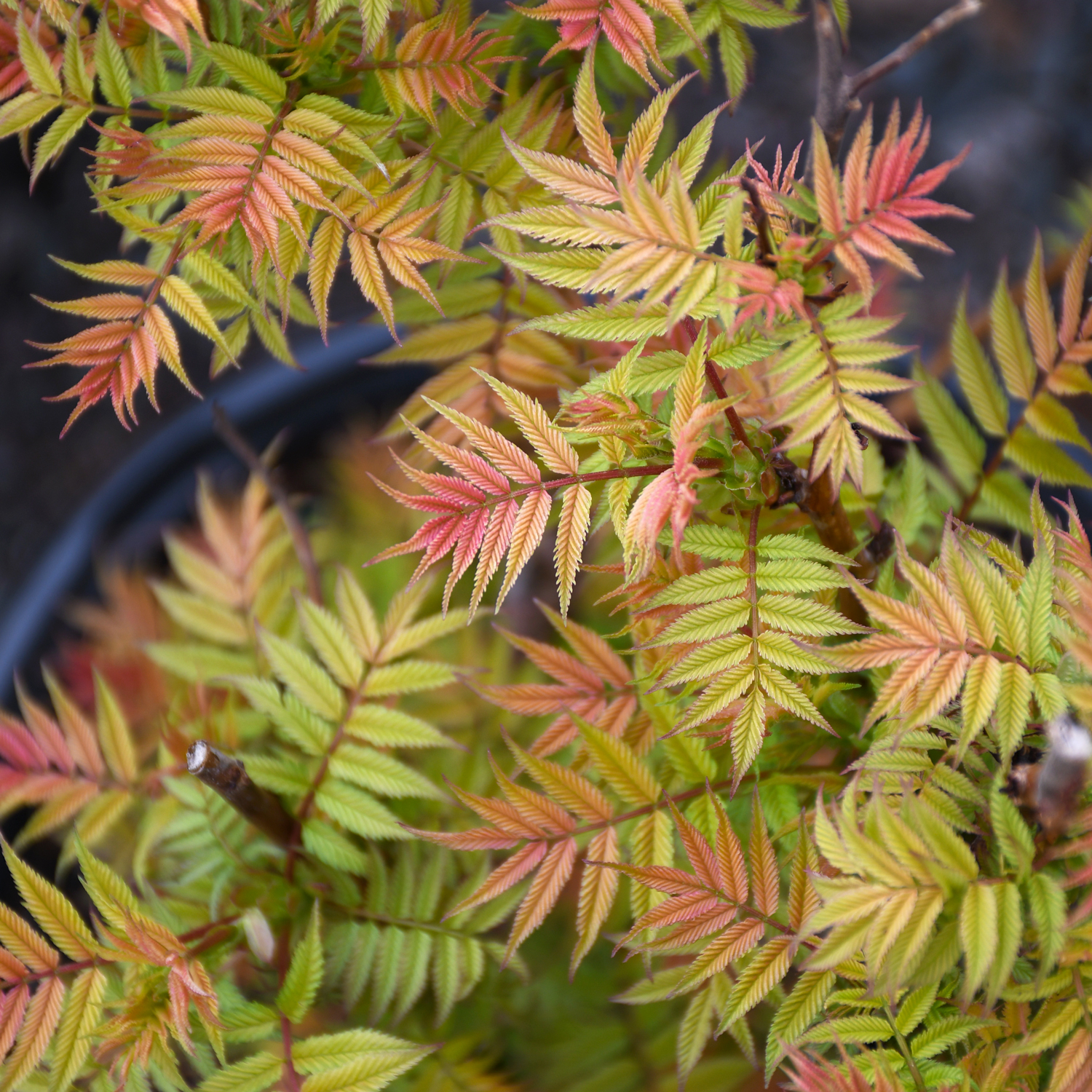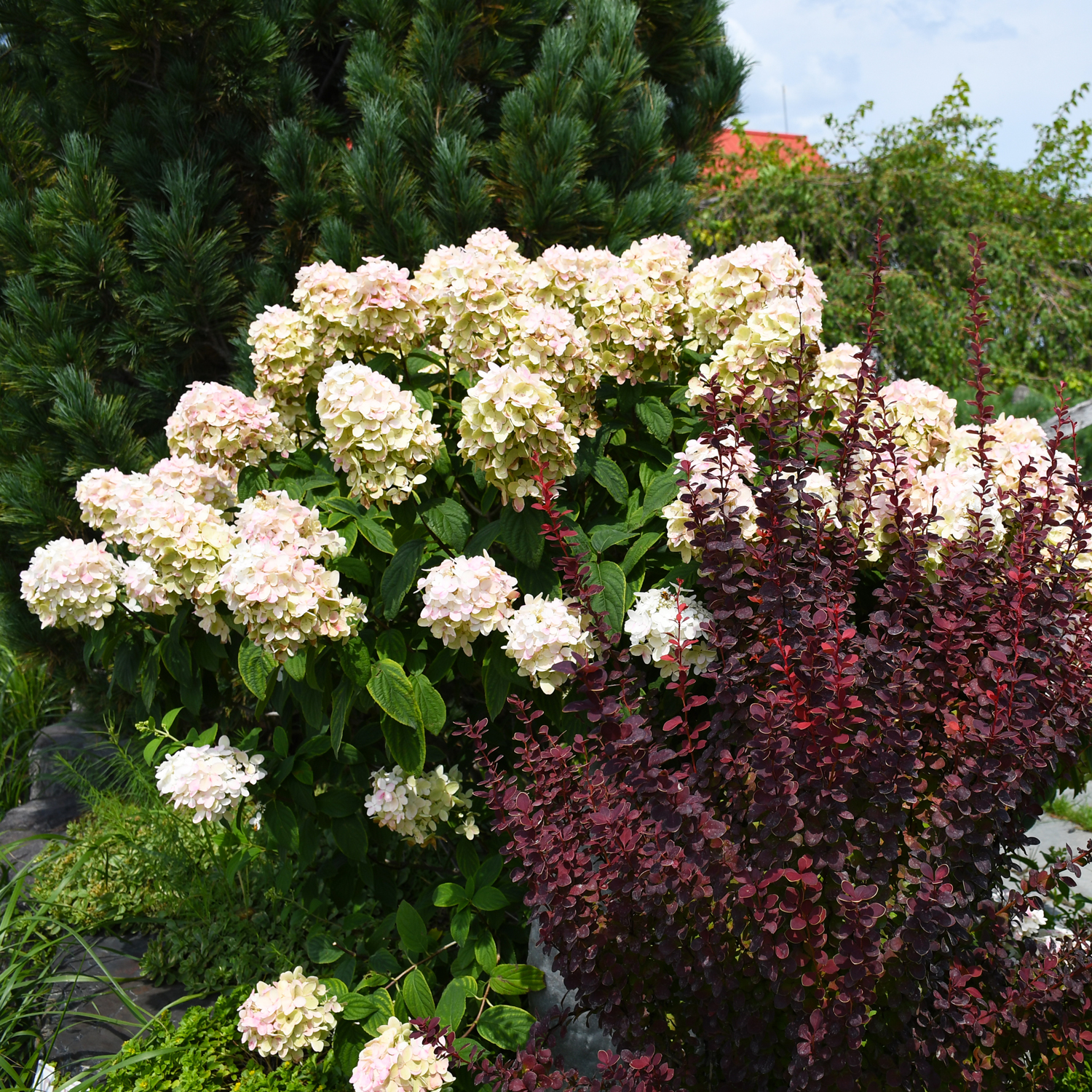Sorbaria, Ash Leaf Spirea




Out of stock
Availability updated daily- Sun Preference
- Full-Sun, Part-Sun
Description
A showy and very hardy medium-sized shrub with upright panicles of frothy white flowers throughout summer and ferny foliage; suckers profusely and spreads into masses, use where this is desirable; for example as a tall groundcover or filler.
Minnesota's Largest Selection of Shrubs
Elevate your landscaping with Gertens' unmatched variety of shrubs! Selecting the right shrubs for your backyard can enhance its beauty and functionality. Consider factors like sunlight, soil type, and mature size when choosing shrubs. For sunny areas, flowering shrubs like roses or hydrangeas can add color and charm. In shady spots, opt for shrubs like azaleas or hostas. Evergreen shrubs provide year-round interest and privacy, while deciduous shrubs offer seasonal color changes. At Gertens, we offer a wide selection of shrubs to suit every backyard need.
Details
Height: 8 feet
Spread: 10 feet
Sunlight:![]()
![]()
Hardiness Zone: 2a
Other Names: Ural False Spirea, Ash Leaf Spirea
Description:
A showy and very hardy medium-sized shrub with upright panicles of frothy white flowers throughout summer and ferny foliage; suckers profusely and spreads into masses, use where this is desirable; for example as a tall groundcover or filler
Ornamental Features
False Spirea features airy plumes of white flowers rising above the foliage from early to mid summer. It has dark green foliage which emerges burgundy in spring. The pinnately compound leaves do not develop any appreciable fall color. The fruit is not ornamentally significant.
Landscape Attributes
False Spirea is a dense multi-stemmed deciduous shrub with an upright spreading habit of growth. Its relatively coarse texture can be used to stand it apart from other landscape plants with finer foliage.
This is a high maintenance shrub that will require regular care and upkeep, and is best pruned in late winter once the threat of extreme cold has passed. Gardeners should be aware of the following characteristic(s) that may warrant special consideration;
- Suckering
False Spirea is recommended for the following landscape applications;
- Mass Planting
- Groundcover
- Naturalizing And Woodland Gardens
Planting & Growing
False Spirea will grow to be about 8 feet tall at maturity, with a spread of 10 feet. It tends to fill out right to the ground and therefore doesn't necessarily require facer plants in front, and is suitable for planting under power lines. It grows at a fast rate, and under ideal conditions can be expected to live for approximately 20 years.
This shrub does best in full sun to partial shade. It prefers to grow in average to moist conditions, and shouldn't be allowed to dry out. It is not particular as to soil type or pH. It is somewhat tolerant of urban pollution. This species is not originally from North America.
| SKU | Container Size |
| S2450 | #2 Container (2 Gallon) |
* Not all container sizes may be available at this time. See store for details on specific container size availability.
More Information
| Available for Pre-Order | No |
|---|---|
| Sun Preference | Full-Sun, Part-Sun |
| USDA Hardiness Zone | 2, 3, 4, 5, 6, 7 |
| Common Family Name | False Spirea |


